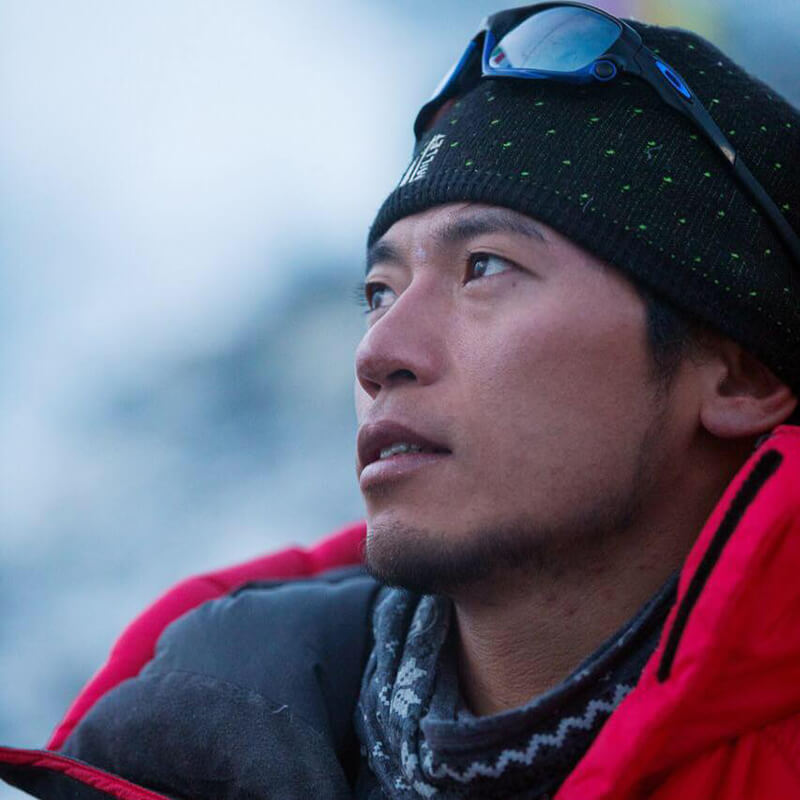Famous Japanese alpinist Nobukazu Kuriki found dead on Everest
Japanese climber Nobukazu Kuriki (35) was found dead at Camp-2 of Everest today in the morning. Kuriki, who was on his 8th attempt on the mountain, arrived at the Base Camp (5300m) on 27th April, 2018. Though he was suffering from severe cough and fever since the very begining of the expedition, he continued his climb on the mountain. He moved to Camp-2 (6400m) for his second rotation on 12th May, 2018 and started his acclimatization. But he clearly was in pain, "I'm here at 7400m now. Now, I feel the pain and difficulty in this mountain, and I'm up and up. I want to make it very carefully," as he posted it on his Facebook page yesterday and it ended up as his last post as he was found dead today in the morning at Camp-2. His death news was confirmed by Gyanendra Srestha, Liaison Officer from Everest Base Camp.

In 2007, Kuriki summited his first eight-thousander Cho Oyu. He also summited Dhaulagiri and Broad Peak in 2009 and 2014 respectively. All his summits were without supplemental oxygen. But Kuriki is mainly famous for his style of climbing and stubborn attitude. He preferred alpine style without Sherpa and/or without supplemental oxygen climbing. He first attempted Everest in 2009 from Tibet side in a live coverage over the internet. After that he tried seven more times (2010, 2011, 2012, 2015, 2016 ,2017 and 2018) via different routes, but failed. In 2012, during his Everest expedition, both of his hands, feet and nose were affected with severe frostbite. As a consequence, he lost nine out of ten fingers of his hand.
Some of His Notable Eight-thousanders Expeditions:
2007 - Cho Oyu (8188m) in Spring:
A 7 members Japanese team, led by Nobukazu Kuriki via NW Side. Kuriki summited without supplemental oxygen.
2008 - Manaslu (8163m) in Autumn:
A 3 members Japanese team, led by Nobukazu Kuriki via NE Face, Kuriki reached up to 8125m. Ski down from fore-summit to Camp-3 and the next day from Camp-3 to Base Camp.
2009 - Dhaulagiri (8167m) in Spring:
A 6 members Japanese team, led by Nobukazu Kuriki via NE Ridge. Kuriki summited without supplemental oxygen. Ski down from Camp-2 (6500m) to Camp-1 (5700m).
2009 - Everest (8848m) in Autumn:
A 10 members Japanese team, led by Nobukazu Kuriki via N Col-N Face, Kuriki reached up to 7900m.
2010 - Annapurna (8091m) in Spring:
A 5 members Japanese team, led by Nobukazu Kuriki via N Face, Kuriki reached up to 7700m.
2010 - Everest (8848m) in Autumn:
Nobukazu Kuriki attempted solo via S Col-SE Ridge, Kuriki reached up to 7750m.
2011 - Shishapangma (8027m) in Spring:
Nobukazu Kuriki attempted via SW Ridge, Kuriki reached up to 7600m.
2011 - Everest (8848m) in Autumn:
A 3 members Japanese team, led by Nobukazu Kuriki attempted via Geneva Spur-SE Ridge, Kuriki reached up to 7800m.
2012 - Shishapangma (8027m) in Spring:
Nobukazu Kuriki attempted via SW Ridge, Kuriki reached up to 6500m and slide down, but survived.
2012 - Everest (8848m) in Autumn:
A 3 members Japanese team, led by Nobukazu Kuriki summited via W Ridge, Kuriki reached up to 8000m.
2014 - Broad Peak (8051m) in Summer:
Nobukazu Kuriki summited solo, without supplemental oxygen.
2015 - Everest (8848m) in Autumn:
A 2 members Japanese team, led by Nobukazu Kuriki summited nvia S Col-SE Ridge, Kuriki reached up to 8150m.
2016 - Annapurna (8091m) in Spring:
Nobukazu Kuriki attepmted via S Face, Kuriki reached up to 6290m.
2016 - Everest (8848m) in Autumn:
Nobukazu Kuriki attempted solo via N Face (Hornbein Couloir), Kuriki reached up to 7400m.
2017 - Everest (8848m) in Spring:
Nobukazu Kuriki attempted solo via W Cwm-W Ridge-N Face (Hornbein Couloir), Kuriki reached up to 7300m. Nobukazu Kuriki attempted solo via N Col-NE Ridge, Kuriki reached up to 7350m.
2018 - Everest (8848m) in Spring:
Nobukazu Kuriki attempted solo via S Col-SE Ridge, Kuriki reached up to 7400m.
Photo Courtesy: Nobukazu Kuriki






